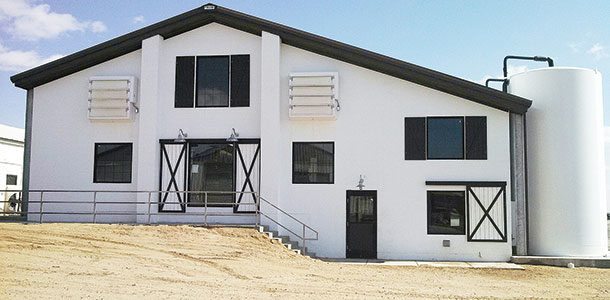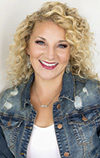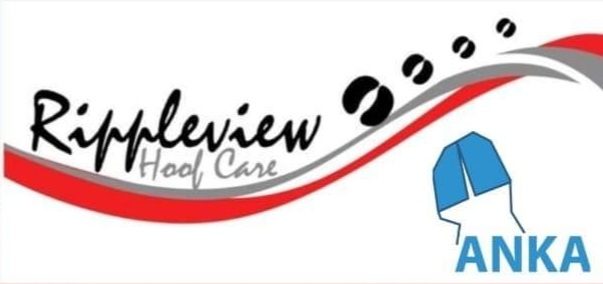Like a breath of fresh air, the Feldpausch family has brought new life to a two-decade-old Colorado dairy, transforming a dated site into a technologically advanced facility poised for the future. Chuck and Nora Feldpausch, dairy producers originally from Michigan, sought to create a sustainable business model and lifestyle for their young family. After evaluating both green field sites and existing operations, they came across a location near Greeley that met their needs.
This included a dependable water supply, good relationships with neighbors and the community, reliable feed sources and a local milk market with a newly constructed Leprino Foods plant nearby. Also important was that the facilities were operational, with a capacity of 750 milk cows and plenty of room to grow.
“Purchasing a dairy versus building new allowed us to work into it and expand at our own pace,” Chuck Feldpausch explains. “It allowed us the comfort of starting with 750 cows and adding on in phases.”
After purchasing the dairy in July 2012, they enlisted Prime Metal Buildings to assist with construction and renovations. One of the first decisions to make was whether to build a brand-new milking parlor or add to the existing one.
The original parlor was a double-12, but with ambitions of eventually maximizing the site’s capacity for 2,100 cows, a double-30 would be most efficient. Considering the large investment in milking equipment this would require, Feldpausch chose to build new rather than add to the existing structure.
 “I am glad we went ahead and built a new parlor. If we had just added stalls, from a cow flow and ventilation perspective, I don’t think we would get the performance and health like we do in the new barn,” he says.
“I am glad we went ahead and built a new parlor. If we had just added stalls, from a cow flow and ventilation perspective, I don’t think we would get the performance and health like we do in the new barn,” he says.
The builders worked with VES Environmental Solutions, LLC to configure a ventilation and cooling system to cope with Colorado’s climate, from dry summer heat to freezing winter temperatures. The hottest days of July may reach into the hundreds, but during a month like January, it is not uncommon to see a swing from below zero to several degrees above in just a matter of days.
“In this barn, we can handle a wide range of temperatures to keep cows and personnel at a nice temperature,” Feldpausch notes.
During cold snaps, thermostat controls regulate louvers and fans to keep the parlor comfortable for both cows and people. This allows for fresh air movement, as opposed to a stale, stuffy environment. In-floor heating keeps milkers warm, and to trap that warmth in the parlor, freezer strips are placed at the entrance of the holding pen during extreme cold.
When summer heats up, the cooling system in the holding area and milking parlor takes effect. In the holding pen, larger water droplets wet the cows, while a high-pressure mist is used in the parlor. Combined with fans, this evaporative cooling method drops the temperature by as much as 15ºF in these areas where cows are grouped together.
Feldpausch is pleased with both the effectiveness of the cooling system and its targeted water usage. He notes, “Getting excellent cooling in the parlor is a must, and that turned out great for us.”

Designing the parlor from scratch also gave Feldpausch the freedom to incorporate technologies for prepping and milking. The FutureCow Prep System, used to clean and stimulate teats, and the Apollo MilkSystem, which automatically post-dips teats, both promote efficiency and consistency. At a rate of just about 300 cows per hour, two milkers and one pusher can handle a shift.
“The new parlor turned out great. We are now milking more cows, and we have kept the somatic cell count and cull rates low and have very few cases of mastitis,” he states. “The milkers seem happy and the cows seem happy.”
The previous parlor continues to run today but with a renewed purpose. One side of the double-12 is now used for milking hospital cows. The milk goes into a small cooling tank before being pasteurized and fed to calves.
Adding more cows to meet milking capacity required more housing as well. Feldpausch favored freestalls because they allow for more cows on a smaller footprint, and animals are better able to stay cleaner and drier during occasional rainy or snowy conditions. With the recent addition of 550 stalls, the dairy will have 1,850 freestalls for milk cows, accompanied by an open lot for roughly 200 later-lactation cows.
While functionality was important in designing the dairy, curb appeal was a priority for the Feldpausches, too.
“It’s important for us and the community to have buildings that look nice and are something that we are proud of,” he says. “We want people living in this area to be proud that we are here making milk.”
The impressive front of the new parlor brings a Midwestern feel to the block building. Shutters on the windows and mock barn doors give the new barn a traditional look.
Throughout the entire design process, Feldpausch held true to the philosophy that erasing a pencil mark is much easier – and less painful – than re-pouring concrete.
 “By the time we got to actually doing the project, we had made most of the mistakes on paper,” he says.
“By the time we got to actually doing the project, we had made most of the mistakes on paper,” he says.
He and the building designers spent hours discussing how and where to locate buildings, considering important factors such as existing structures, water and utility lines, cow flow and vehicle traffic flow patterns. The new parlor alone was laid out in half a dozen locations before determining its final site, only about 25 feet from the former parlor, on a space previously used for calf hutches.
Working with Greg Beath from Lines 2 Designs LLC helped Feldpausch to visualize these options using three-dimensional design software. As they discussed layouts, he was able to virtually “walk” through the barn and up and down stairs.
Some creative thinking on the part of his equipment dealer, Dairy Specialists, led to a unique walkout basement for the milking parlor. This design utilized the existing slope, giving way to an exterior door that provides direct access for service providers coming to work on milking equipment or refill dip totes.
All of the meticulous planning paid off. If the Feldpausches were to do the project over again, he says there really isn’t anything he would change.
He adds, “It wasn’t quite as easy as working from a plain piece of paper in the middle of a field, but we made it work and I think it turned out well.” PD
PHOTOS
PHOTO 1: For the Feldpauschs, dairying is not just about milking cows; it is about being a member of the community. The family put considerable time into designing a building that was functional for reaching their milking capacity but also a visual asset.
PHOTO 2: Feldpausch is pleased with the individual-indexing, vertical lift parlor stalls, which speed up exiting and offer flexibility for a variation in cow body size.
PHOTO 3: A new double-30 parlor replaces a dated double-12 as the main milking facility at Long Meadow Farm.
PHOTO 4: The holding area and parlor feature a ventilation system that effectively cools cows on 100- degree days, while also keeping the barn fresh and comfortable when temperatures plummet well below zero. Photos courtesy of Prime Metal Buildings.

Peggy Coffeen
Editor
Progressive Dairyman






